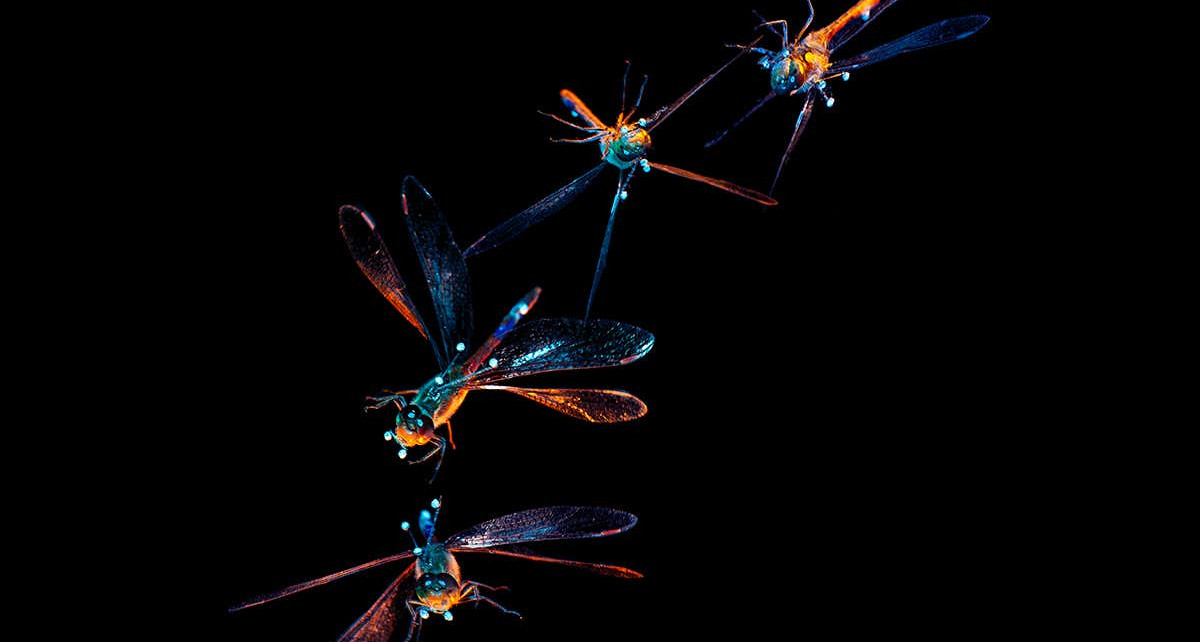[ad_1]

Samuel Fabian/Lin Lab
When falling through the air in an upside-down position, dragonflies do backwards somersaults to get back to an upright position. They do this even when they’re unconscious, and even – if their wings are propped open – when they’re dead.
These findings suggest that dragonflies are equipped with a potent mechanical design that keeps them right-side-up and airborne without any real effort. Such a passive flight stabilisation mechanism could inspire better designs for small aircraft like drones, allowing for good stability and manoeuverability “with less computational effort,” says Samuel Fabian at Imperial College London, UK.
“Passive stability lowers the effort requirements of flight, likely influencing the evolution of the dragonfly’s shape,” he says.
Advertisement
Fabian and his colleagues placed magnets and six motion tracking markers on 20 male common darter dragonflies (Sympetrum striolatum) they had trapped in the wild. They then placed the dragonflies, one by one, either right-side-up or upside-down on platforms under magnets. By lifting the magnets, they dropped the dragonflies to study their falling technique using high-speed motion capture cameras.
Next, they chilled the dragonflies, essentially shutting them down into a torpor state before dropping them again. “The animals were chilled on ice for 20 minutes, which effectively knocks them out and ceases much of their neural function for a while,” he says.
And finally, after each dragonfly died a natural death in their laboratory, they dropped it again, both with and without its wings propped up into the open resting positions it had when it was alive.
Reconstructed 3D models of the falling dragonflies showed the alert ones somersaulting backwards when they were dropped upside down, Fabian says. Interestingly, the knocked out dragonflies did the same thing, but more slowly.
When they were dead, the dragonflies tended to dive headfirst when dropped. But with wing propping, their bodies did a back flip to get upright, although they tended to spin a little while doing so. “It was clearly a mixture both of shape and muscle tone that engendered the animal’s unconscious aerobatics,” says Fabian.
Many animals, including cats, roll and twist their bodies lengthwise to right themselves if they fall upside down, he says. The dragonfly’s manoeuver of flipping backwards is “surprising” – but clearly effective.
He says this research provides an excellent example how body-wing shape can effectively provide passive stability for small aerial systems.
Journal reference: Proceedings of the Royal Society B, DOI: 10.1098/rspb.2020.2676
Sign up for Wild Wild Life, a free monthly newsletter celebrating the diversity and science of animals, plants and Earth’s other weird and wonderful inhabitants
More on these topics:
[ad_2]
Source link




